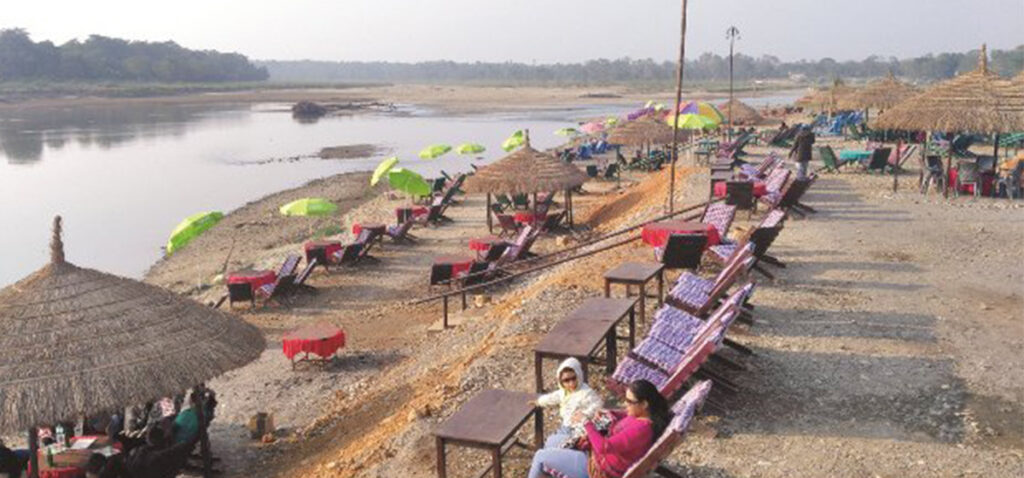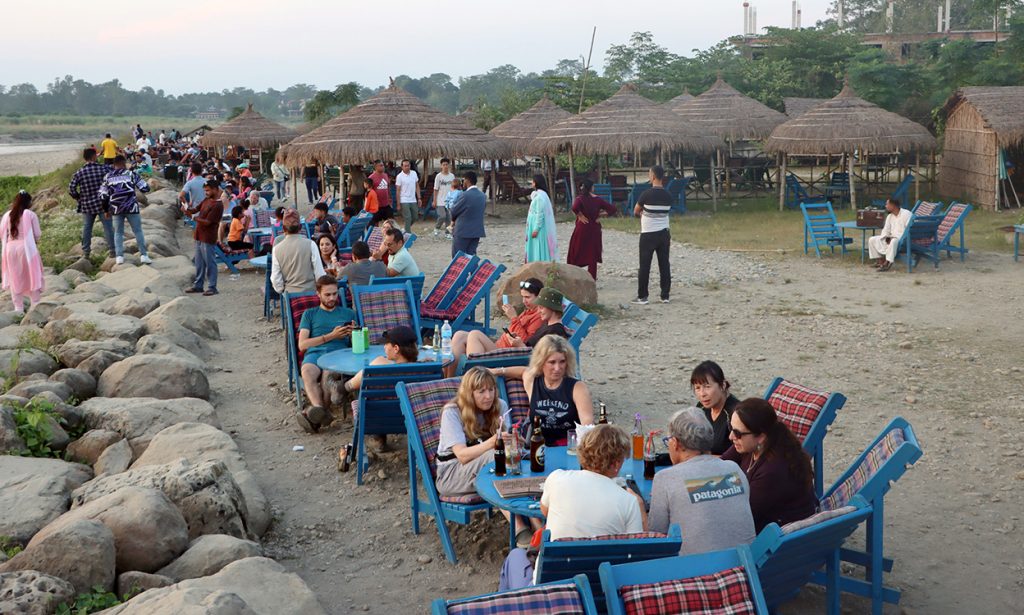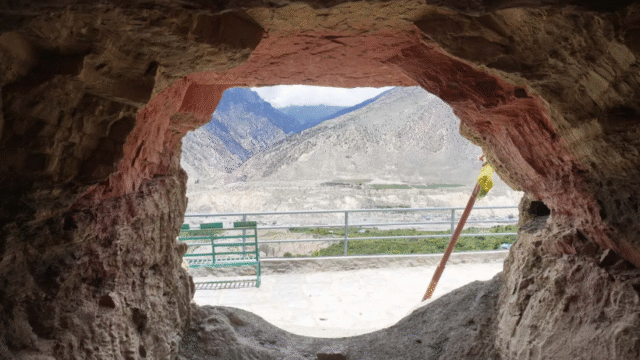In the heart of Nepal’s premier jungle tourism destination, Sauraha, a concerning silence has gripped the streets, hotels, and safari zones this monsoon season. Local tourism entrepreneurs are sounding the alarm, with many describing this year as the worst in recent memory. Among them is Deepak Bhattarai, a hotelier who has been involved in the tourism business in Sauraha for the past 25 years. According to him, never before has he witnessed such a deserted Sauraha during the rainy season.
While the monsoon generally brings a slowdown in tourism, Bhattarai says this is the first time in his decades of experience that not a single foreign tourist has been seen. This, he noted, is a worrying departure from the usual pattern where at least some Indian, Chinese, and domestic tourists continue to visit even during the off-season.

Hotel Occupancy Hits Record Low
Bhattarai, the immediate past president of the Regional Hotel Association, reported that hotel occupancy rates have plummeted drastically. At present, only 5 to 10 percent of rooms are occupied, with a marginal increase during weekends. “On Fridays and Saturdays, occupancy may reach around 10 percent, but on other days, it falls back to 5 percent,” he said. In previous years, Sauraha used to receive at least 30 percent occupancy even during the monsoon, reflecting a stark decline this year.
Due to the lack of guests, many hotels have started sending their staff on leave. Bhattarai, who also manages Chitwan Forest Resort, mentioned that only 25 percent of his hotel staff are currently working. The remaining employees have either been granted unpaid leave or are working on a rotation basis to minimize operational costs.
Travel Disruptions and Economic Strain
Bhattarai attributes the sharp decline in tourist numbers to travel difficulties, especially for Indian visitors. Sauraha receives a significant number of Indian tourists via the Bhairahawa border point. However, road conditions on the surface route connecting Bhairahawa to Chitwan have deteriorated significantly due to the monsoon, making travel difficult. As a result, even regional tourists have avoided the area this year.
Veteran tourism entrepreneur Giridhari Chaudhary, who has been involved in the tourism sector since 1976 (2033 BS), echoes similar concerns. He believes the drop in visitors is not solely due to seasonal rain but also linked to broader economic challenges. The ongoing global and regional economic slowdown has reduced discretionary spending on travel. Moreover, poor road connectivity from major hubs like Kathmandu and Butwal, along with irregular domestic flight schedules, have discouraged both domestic and foreign tourists.
Safari Activities Suspended, Wildlife Tourism Impacted
Sauraha is widely known for its rich jungle tourism offerings, including jeep safaris, elephant rides, canoe trips, nature walks, and wildlife viewing in and around the Chitwan National Park. These activities are the backbone of the local tourism industry and attract thousands of visitors annually. However, due to heavy rainfall, the park authority has temporarily suspended jeep safaris, one of the most popular experiences for tourists in the region.
With a key attraction now unavailable, the appeal of Sauraha has diminished further, especially for first-time visitors who plan their trips around these wildlife experiences. While activities like elephant safaris and canoeing are still ongoing on a limited basis, the absence of the full range of offerings has had a notable impact on visitor interest.
Employment at Risk in Hospitality Sector
There are around 150 hotels in Sauraha, offering over 8,000 beds in total. These establishments employ more than 6,000 individuals in various roles, from reception and housekeeping to tour guiding and safari driving. The drastic fall in tourist arrivals has placed many of these jobs in jeopardy. Many hotel owners have already started laying off temporary workers, while others are exploring alternative strategies to retain core staff despite the low business.
The ongoing situation has triggered concerns not just for hotel owners and workers but also for the broader local economy that depends on tourism. Local restaurants, souvenir shops, safari operators, and transport providers have all experienced a severe drop in revenue. With no immediate improvement in sight, some fear that a prolonged downturn could lead to the permanent closure of businesses.

A Call for Government Support and Infrastructure Repair
Tourism stakeholders in Sauraha are calling on the government for urgent support. They have requested better road maintenance, especially along key routes connecting Chitwan to other major cities. They also seek consistent flight schedules and weather-resilient tourism promotion policies to help the region sustain its economy even during the monsoon months.
Deepak Bhattarai and others are hopeful that tourism will rebound in the coming months, particularly in the post-monsoon and winter seasons. However, they emphasize the need for long-term planning and resilience building in the tourism sector, especially for destinations like Sauraha that are highly vulnerable to seasonal fluctuations and infrastructure bottlenecks.
In the meantime, hoteliers and business owners in Sauraha continue to grapple with an unusually quiet season, hoping that brighter days are ahead. Until then, the lush green jungles of Chitwan and the empty hotel corridors of Sauraha serve as stark reminders of the challenges Nepal’s tourism industry faces during times of uncertainty.






